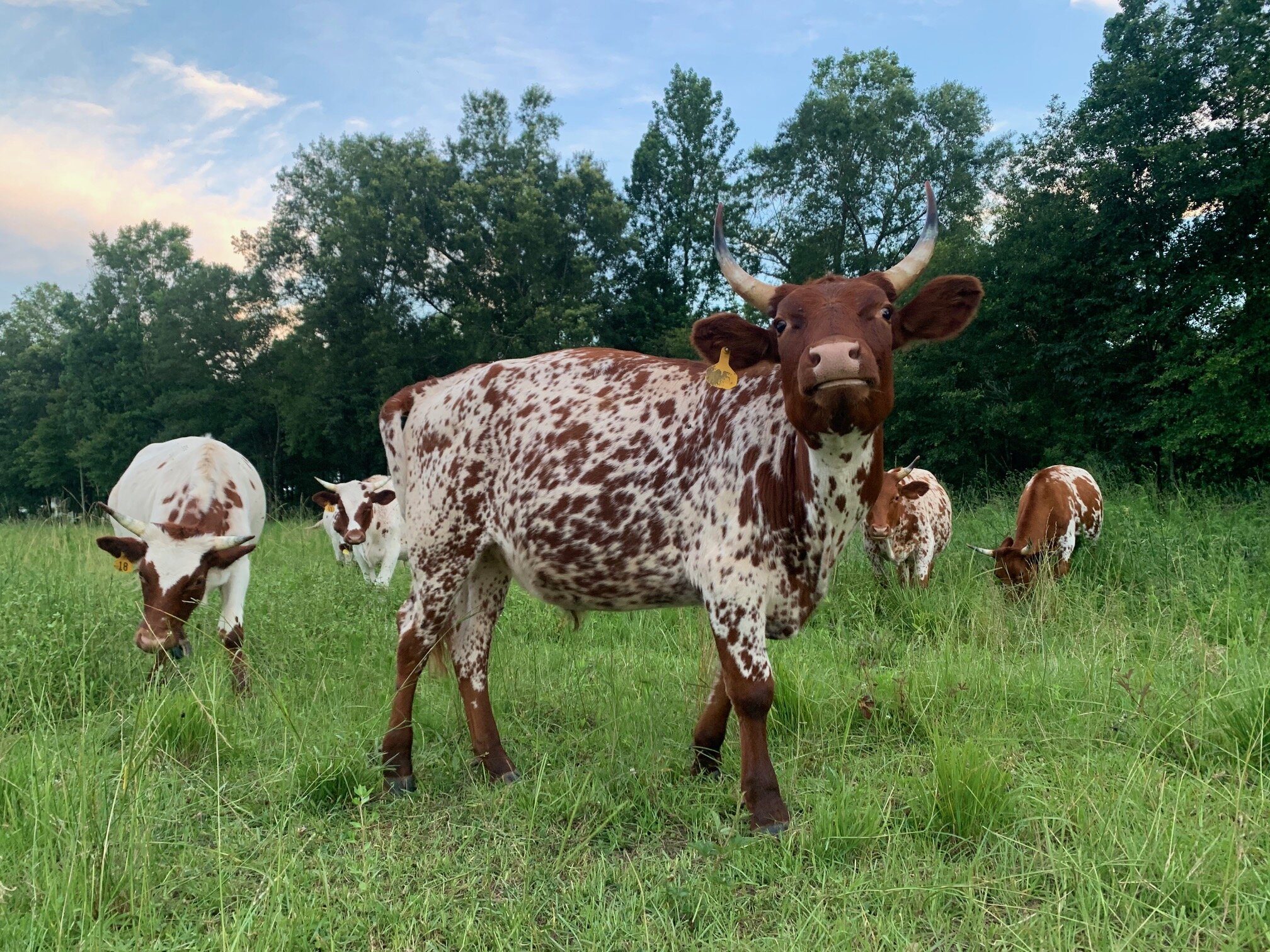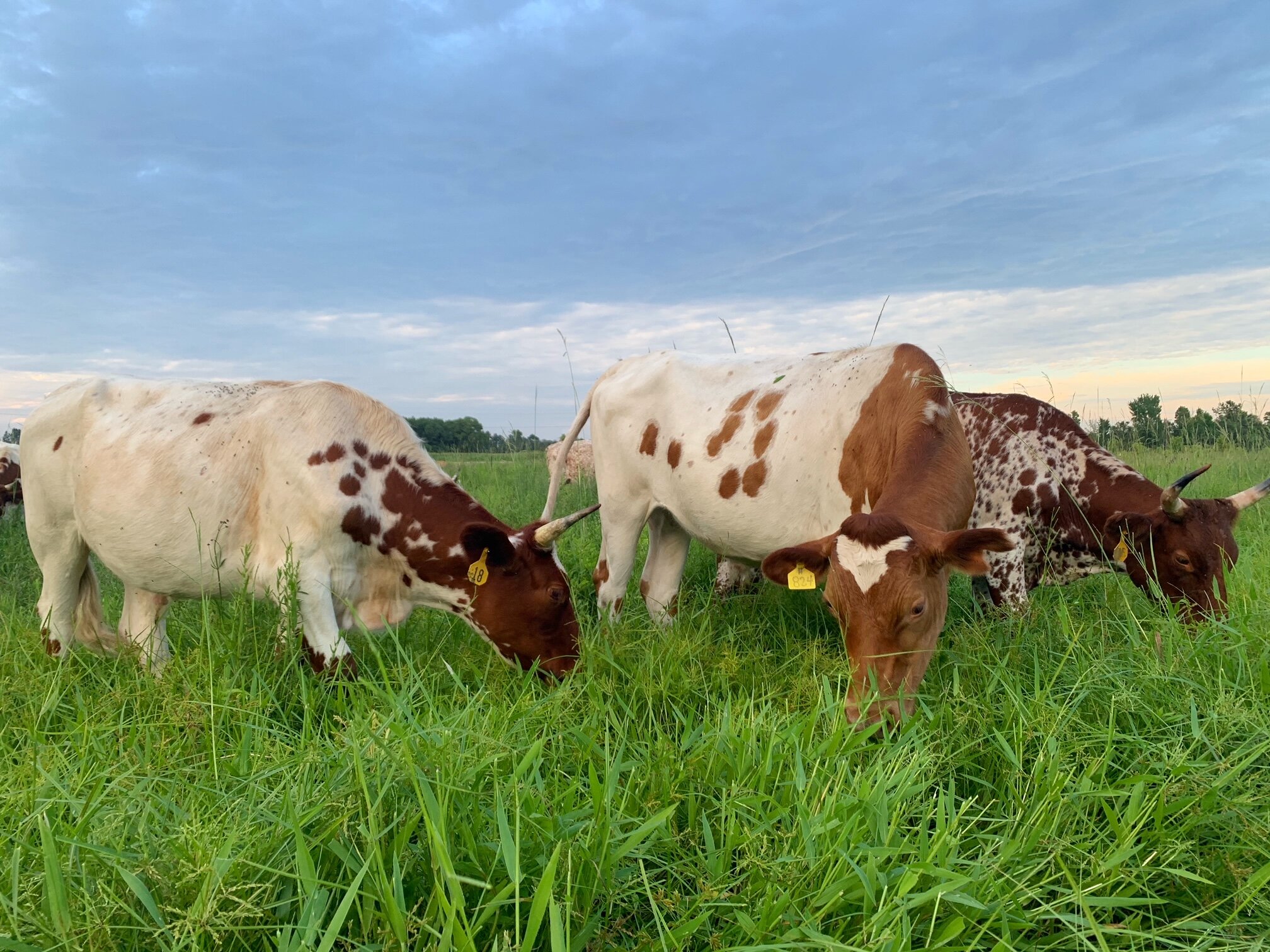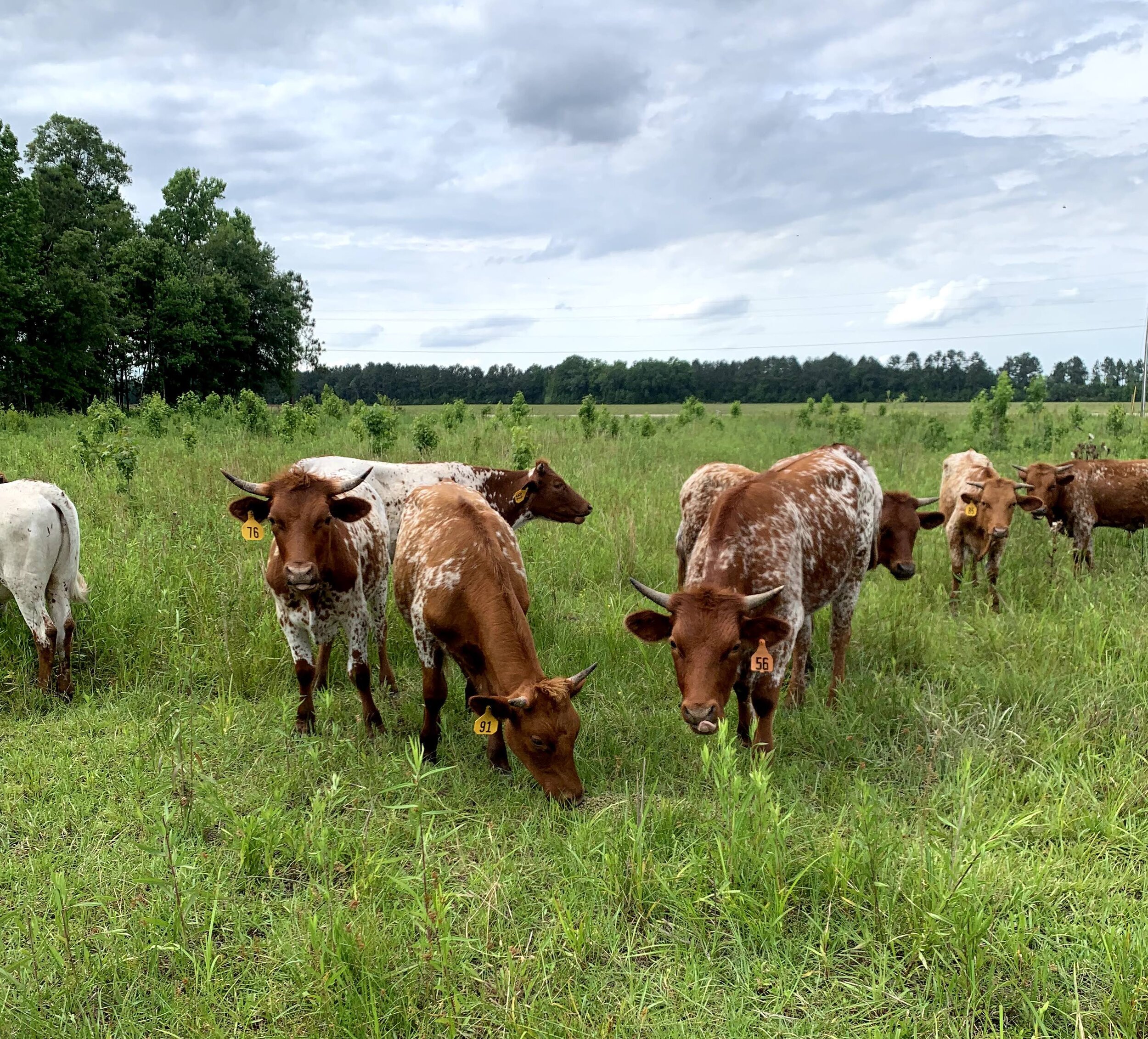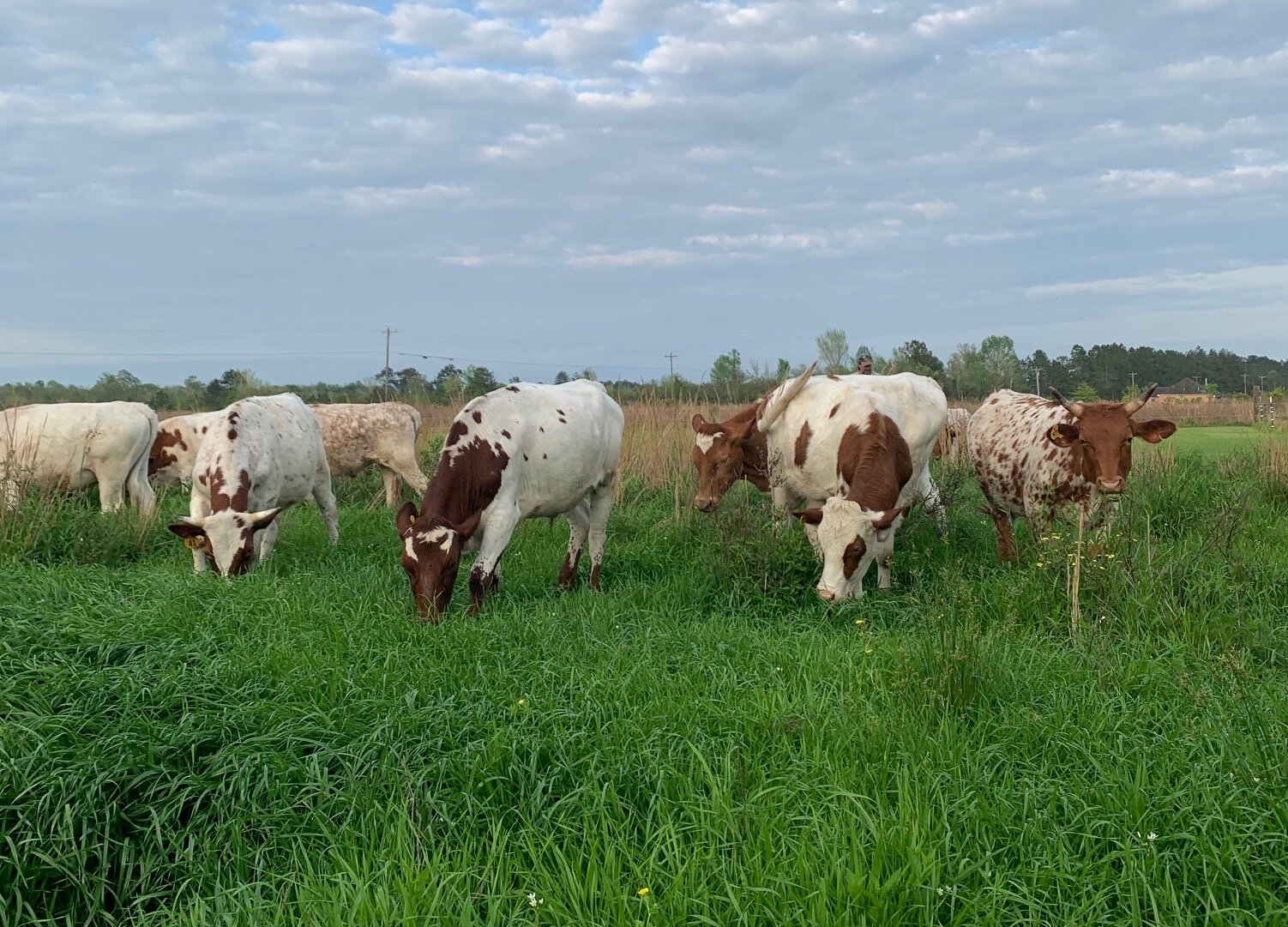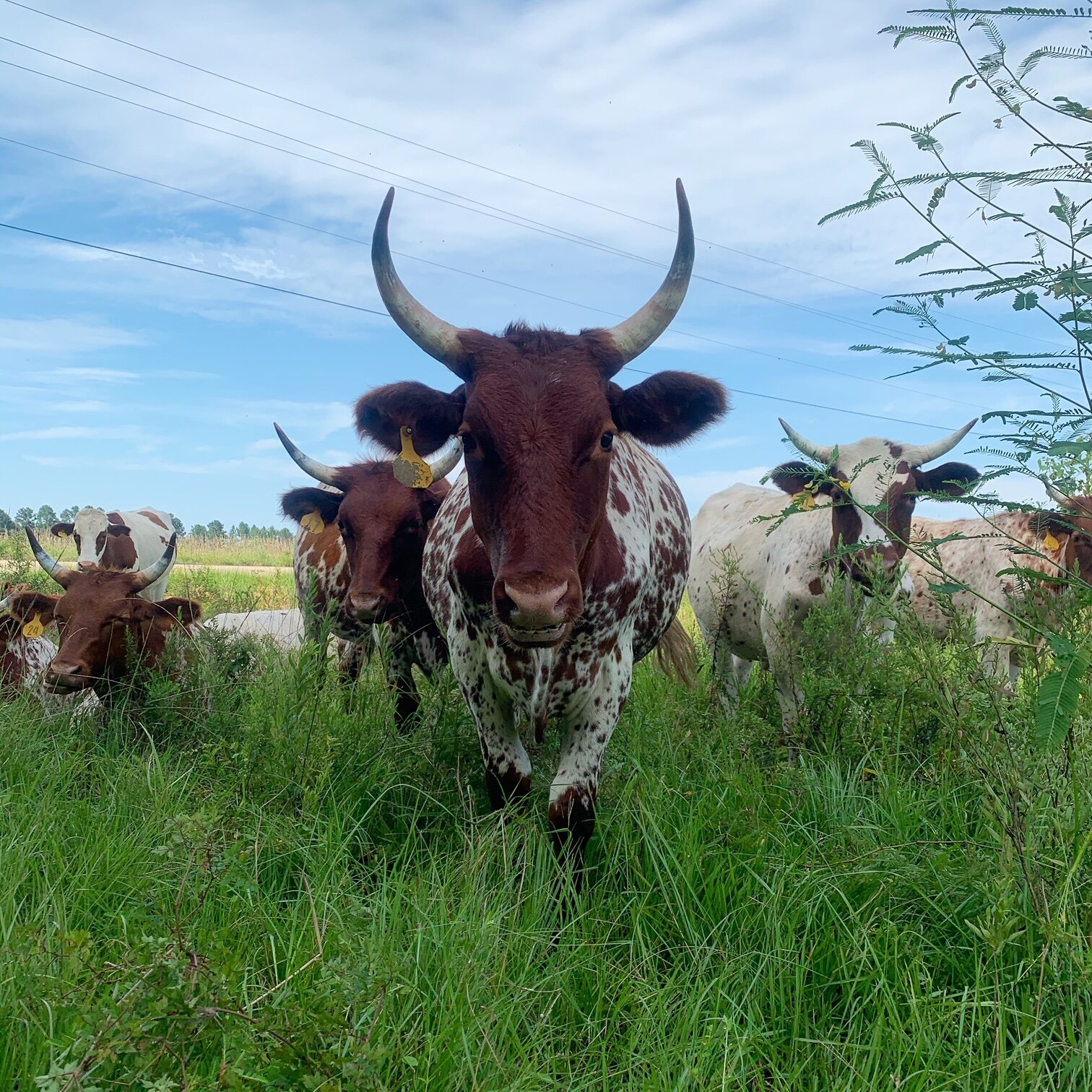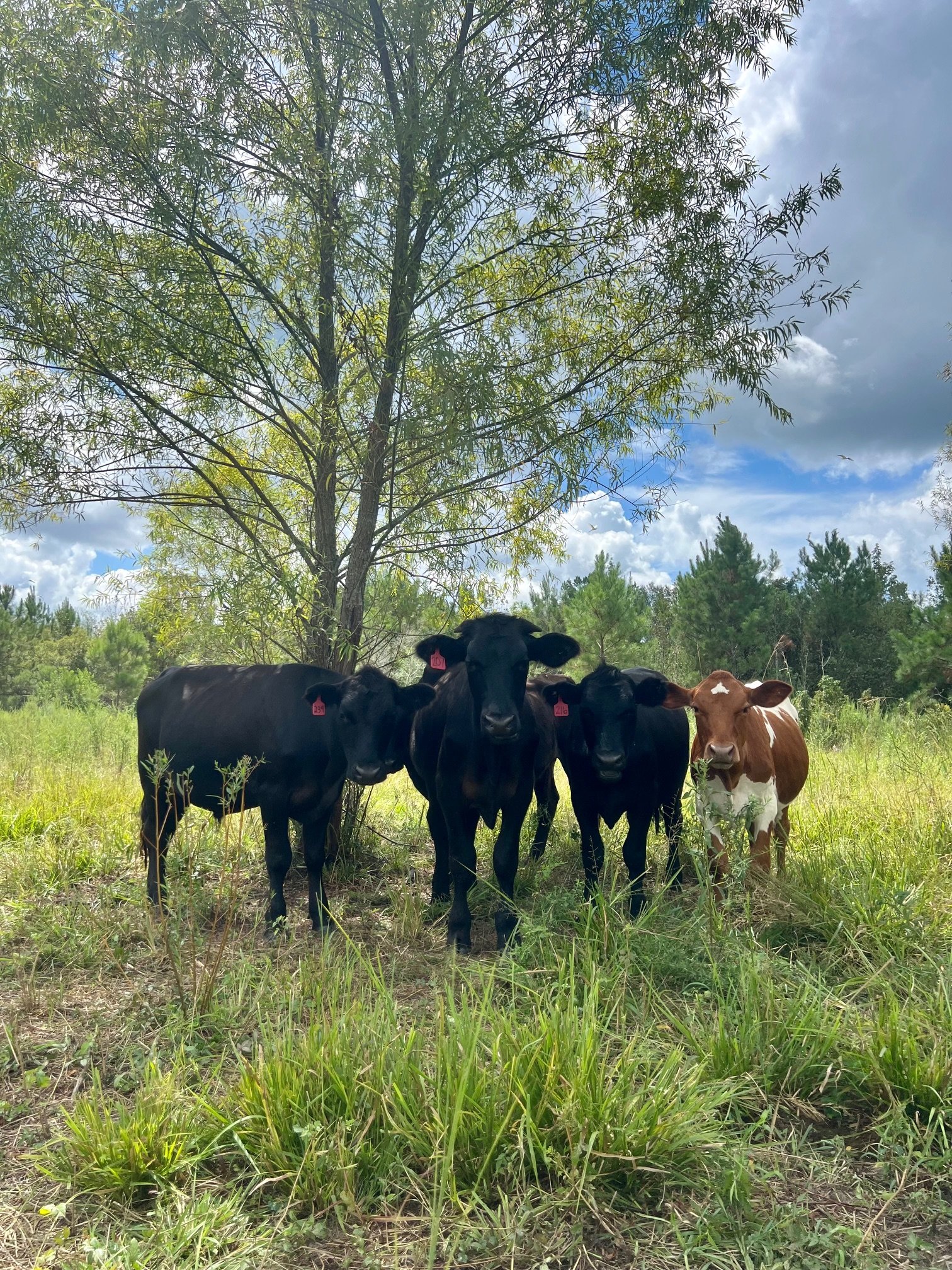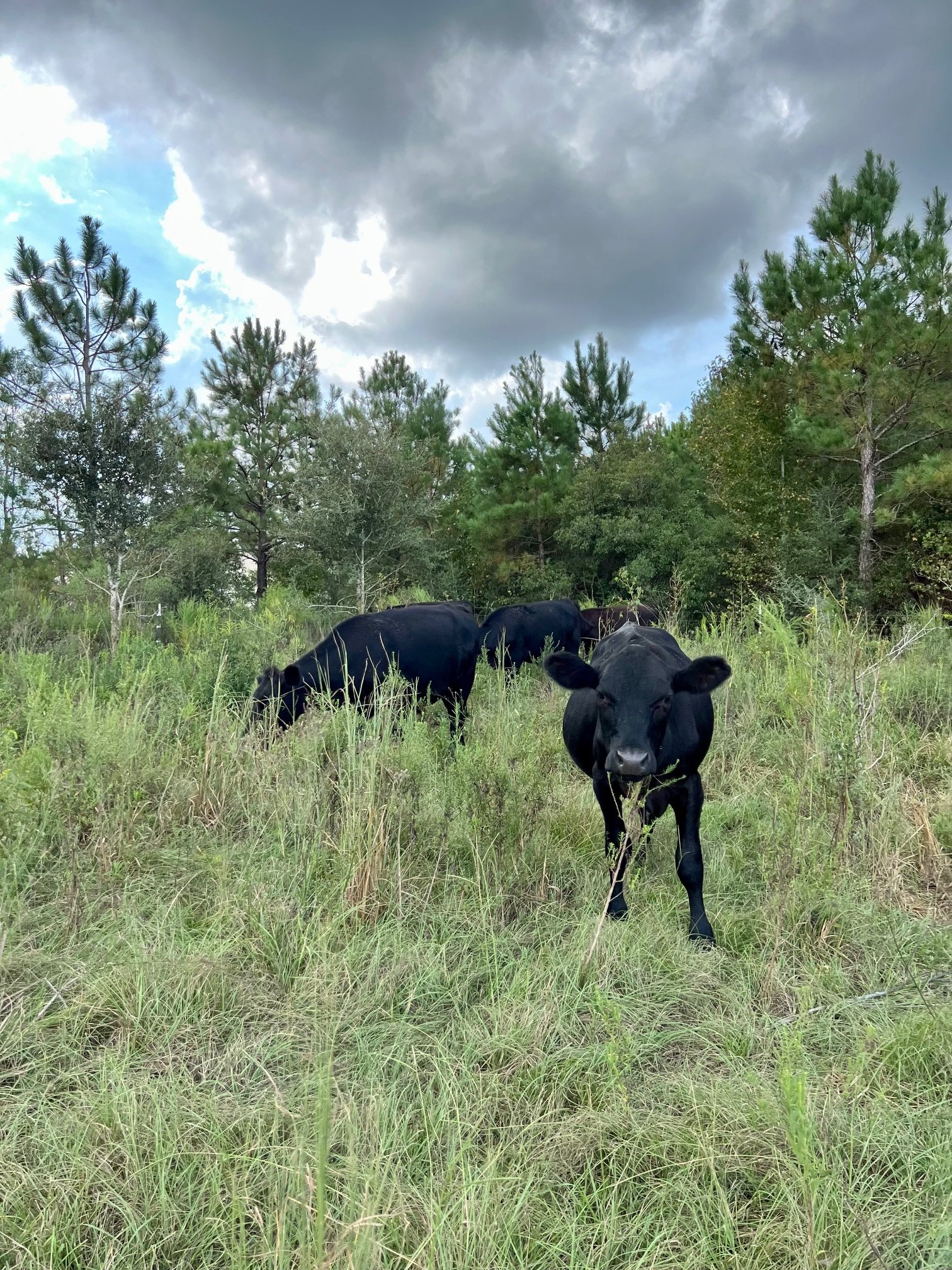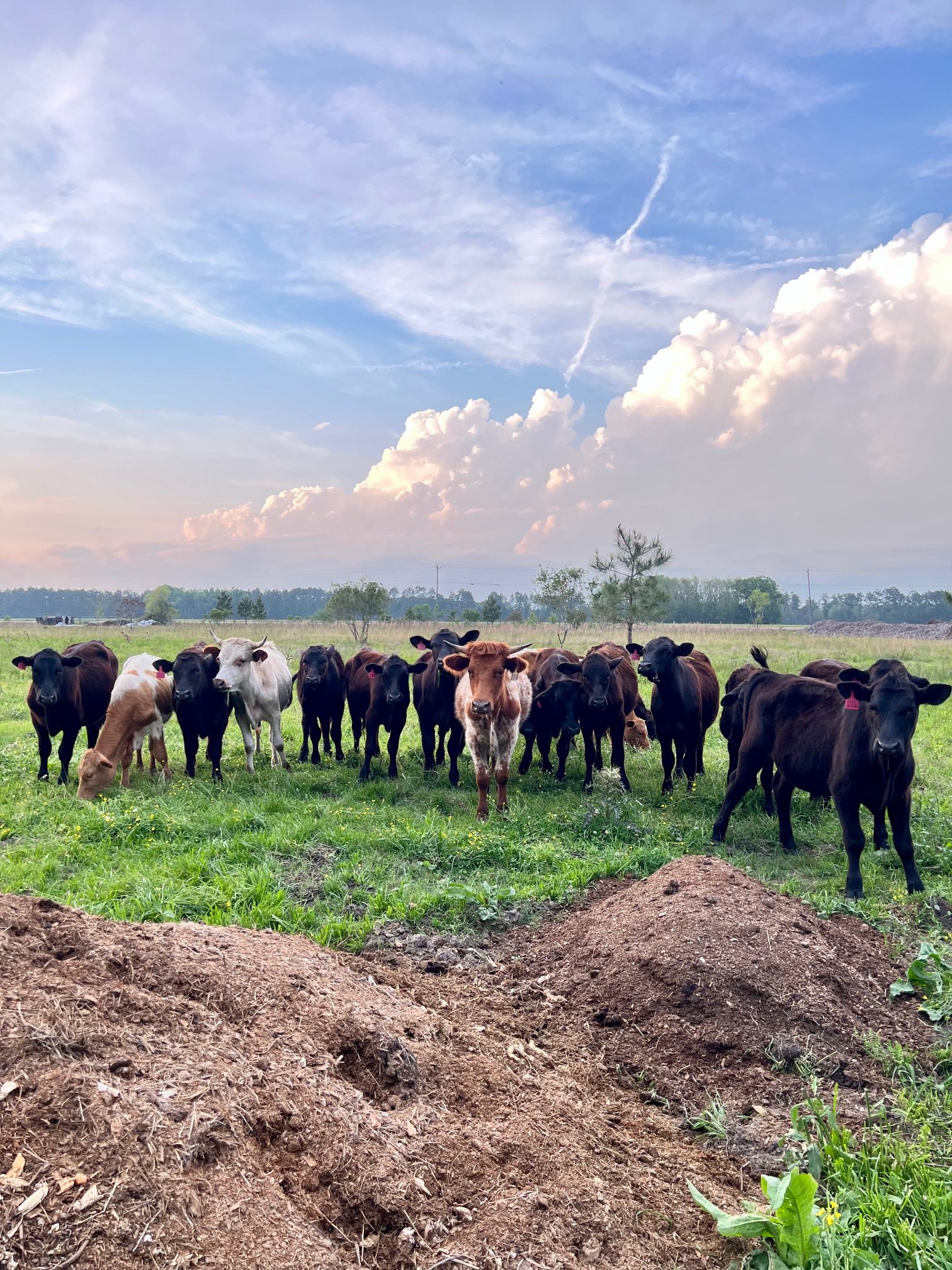Grass-fed, Grass-Finished Beef
Through rotating goats, pigs and chickens through our pastures, we’ve improved our soil and our pasture plant diversity enough to begin raising our own beef cattle each year. We raise them on pasture, rotating them to new paddocks daily in the peak season. This practice allows them to graze fresh, pesticide-free grasses and move on to the next one before they eat it too low. Resting the paddocks between cattle moves allows better regrowth of the plants, more carbon sequestration and risk less parasite uptake.
In months where the forage quality isn’t as high, we feed hay, as well as other feedstocks approved by the American Grassfed Association, such as alfalfa and fermented alfalfa hay.
We do not feed any grain, not necessitating any medicated feeds to offset rumen imbalances. This results in grass-finished and delicious beef, free of any hormones, antibiotics or steroids.
At this time, with our limited acreage, we buy calves and cows from neighboring farms versus taking on the breeding ourselves. We typically raise them on grass for more than a year before processing, but a minimum of six months.
When we started, we primarily focused on Pineywoods cattle, a rare breed brought to the Gulf Coast by the Spanish in the early 1500’s. Pineywoods are one of the oldest breeds that have evolved in the United States and as such, have become well-adapted to our region. They are heat tolerant, long-lived, resistant to parasites and diseases (very important as we try to avoid pharmaceuticals of any kind!) and are able to successful graze and gain weight on a wider variety of plants.
However, as our scale and operation has evolved, we aren’t able to raise as many Pineywoods for a variety of reasons. Availability of enough quality steers is one challenge and also because with their horns, the steers especially can be bullies to other cattle and potentially dangerous to us and our staff in their exuberance. Our processor also charges a higher fee for horned animals.
While we do raise a few Pineywoods a year still, as much as possible, we’re focused on purchasing similarly smaller framed, lighter colored breeds of cattle to maximize their efficiency on pasture and thrive in our hot climate. We have had many Black Angus and Black Angus crosses do well in our program, but we prefer red and lighter breeds when possible.


